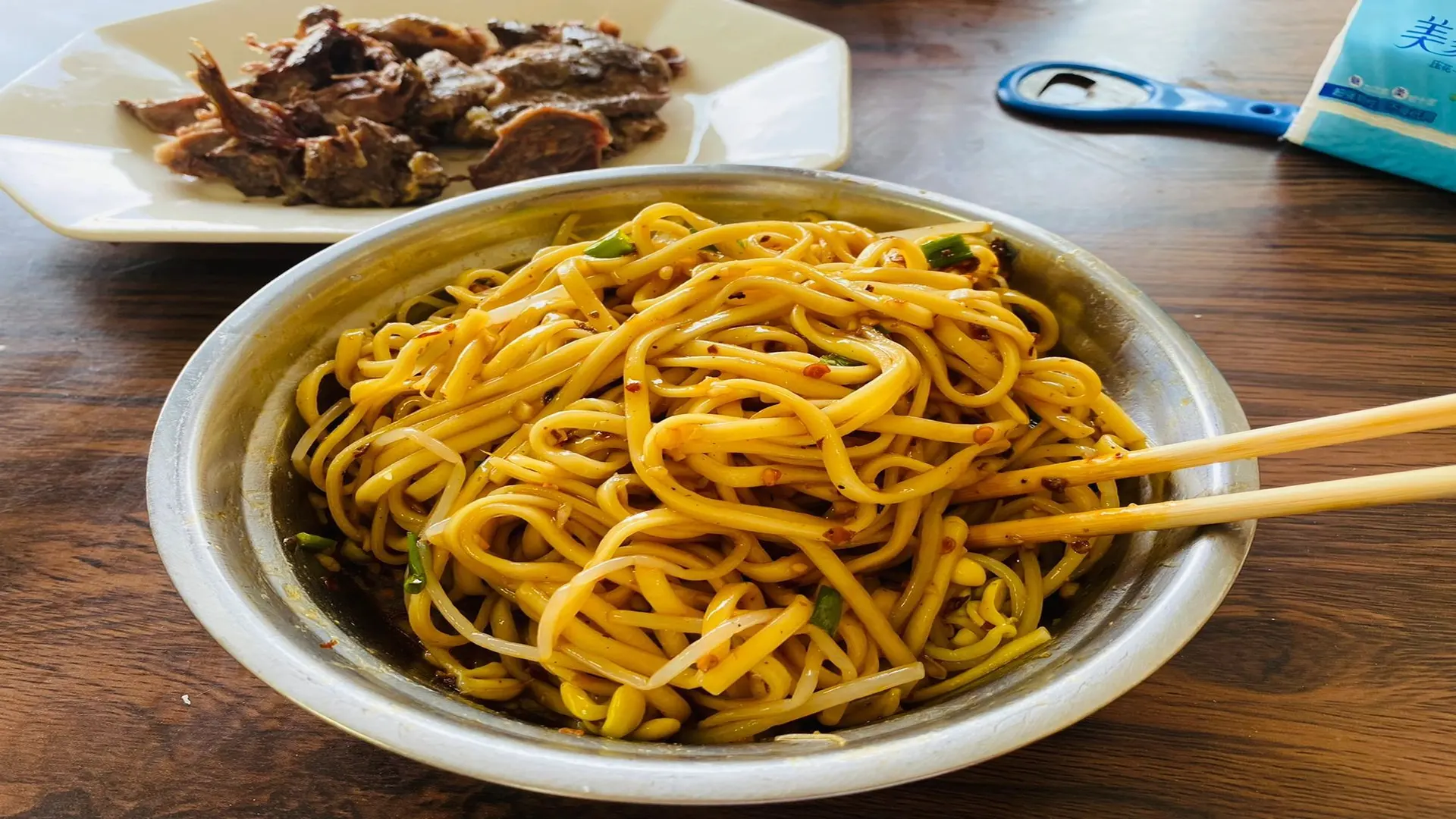The Art of Guoyang Dry Noodle Delicacy: A Culinary Journey through Time
Introduction:
As a passionate food connoisseur and practitioner, I am thrilled to delve into the intricacies of one of the most cherished culinary traditions from Guoyang, a county-level city under the jurisdiction of Bozhou in Anhui Province, China. The dish in question is the iconic Guoyang Dry Noodle, a dish that has been handed down through generations, embodying not only a unique taste but also a rich cultural heritage. This delectable dish, known for its dry noodle preparation accompanied by a tangy soup and eggs, is a testament to the region’s culinary prowess and has been recognized as an Intangible Cultural Heritage.
Origin and Cultural Background:
The Guoyang Dry Noodle traces its roots back to the rich agricultural history of the region, where wheat has been a staple crop for centuries. The dish is a symbol of the local people’s ingenuity and their ability to transform simple ingredients into a meal that is both satisfying and deeply rooted in tradition. The noodle’s preparation and consumption are often associated with family gatherings and special occasions, making it not just a meal but a celebration of community and heritage.
Ingredients and Preparation:
The making of Guoyang Dry Noodle is a meticulous process that requires high-quality wheat flour, water, and a pinch of salt. The dough is kneaded to perfection, ensuring a smooth and elastic texture. The dough is then rolled out into thin sheets, cut into noodles, and left to dry, which gives the dish its characteristic name. The noodles are cooked al dente and then tossed with a blend of aromatics and spices, creating a dry yet flavorful base.
The accompanying tangy soup, or “suan tang,” is made from a broth that is simmered for hours to extract maximum flavor. It is then seasoned with vinegar and other ingredients to give it a distinctive sourness that complements the dry noodles. The dish is typically served with a poached or soft-boiled egg, adding a rich, creamy element to the overall dish.
Texture and Appearance:
The Guoyang Dry Noodle is a study in contrasts. The noodles themselves are firm and slightly chewy, a result of the careful drying process. They are then coated with a mixture that is both dry and spicy, creating a delightful interplay of textures. The tangy soup, with its vibrant color and sharp flavor, cuts through the richness of the egg, providing a harmonious balance on the plate.
The dish is often garnished with fresh herbs and chili oil, adding a pop of color and an extra layer of flavor. The presentation is rustic yet elegant, with the noodles artfully arranged in a bowl, the egg nestled in the center, and the soup ladled around it, creating a visually appealing and appetizing dish.
Representative Dishes and Culinary Characteristics:
While the Guoyang Dry Noodle is the star of the show, it is often accompanied by a variety of side dishes that showcase the region’s农产品 and culinary traditions. These can include pickled vegetables, cold dishes made from local ingredients, and a selection of meat dishes that are slow-cooked to tender perfection.
The culinary characteristics of the Guoyang Dry Noodle are its simplicity, authenticity, and the interplay of textures and flavors. The dry noodles provide a canvas for the tangy soup and the rich egg, creating a symphony of tastes that is uniquely Guoyang. The dish is a testament to the region’s culinary heritage and the skill of its people in creating something extraordinary from the most humble of ingredients.
Conclusion:
In conclusion, the Guoyang Dry Noodle is more than just a meal; it is a culinary journey through the heart of Anhui Province. It is a dish that speaks of the land, the people, and their traditions. As a food practitioner, I am honored to share this culinary treasure with the world, inviting everyone to savor the flavors of history and culture that are woven into every bite of this非遗技艺 masterpiece.
